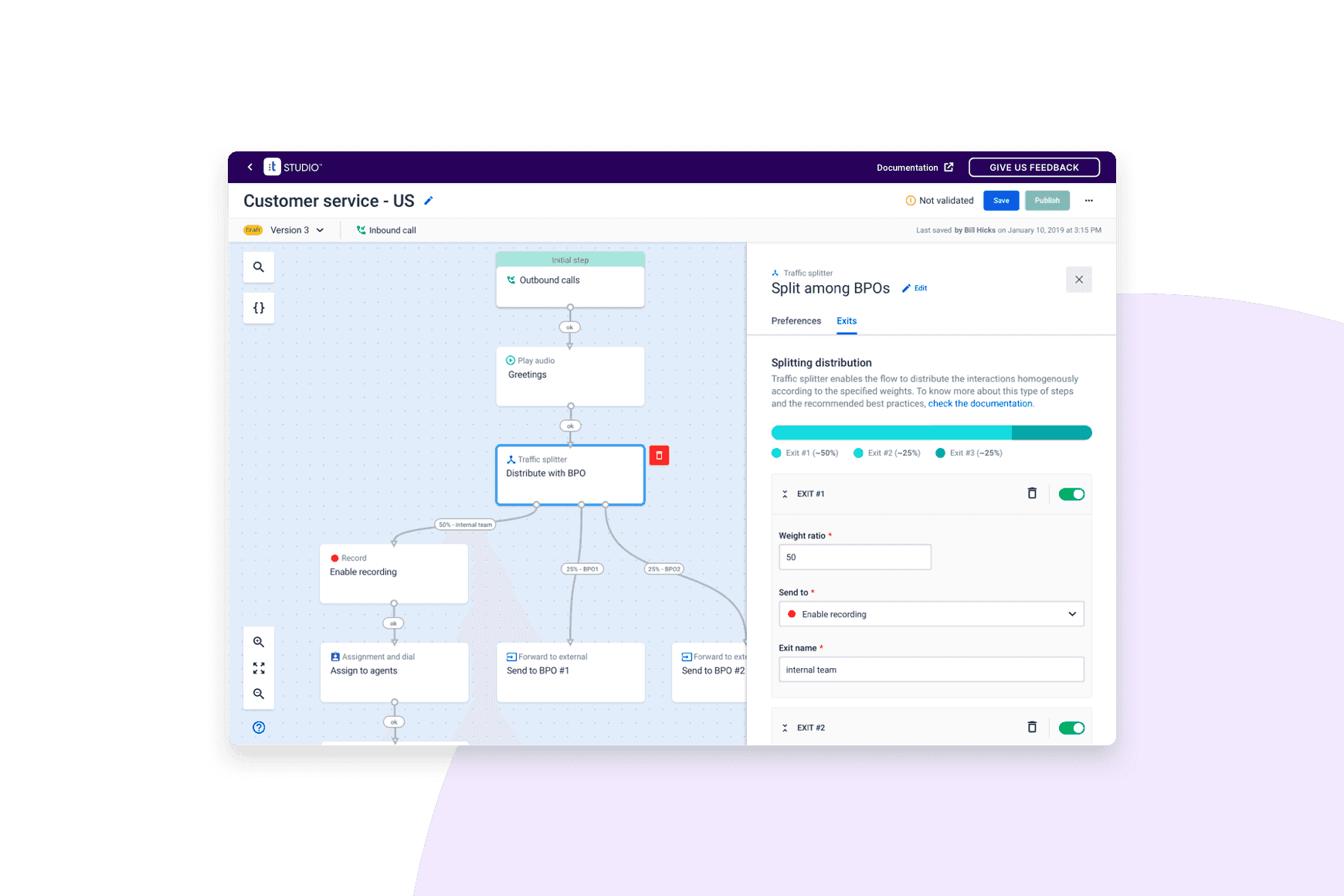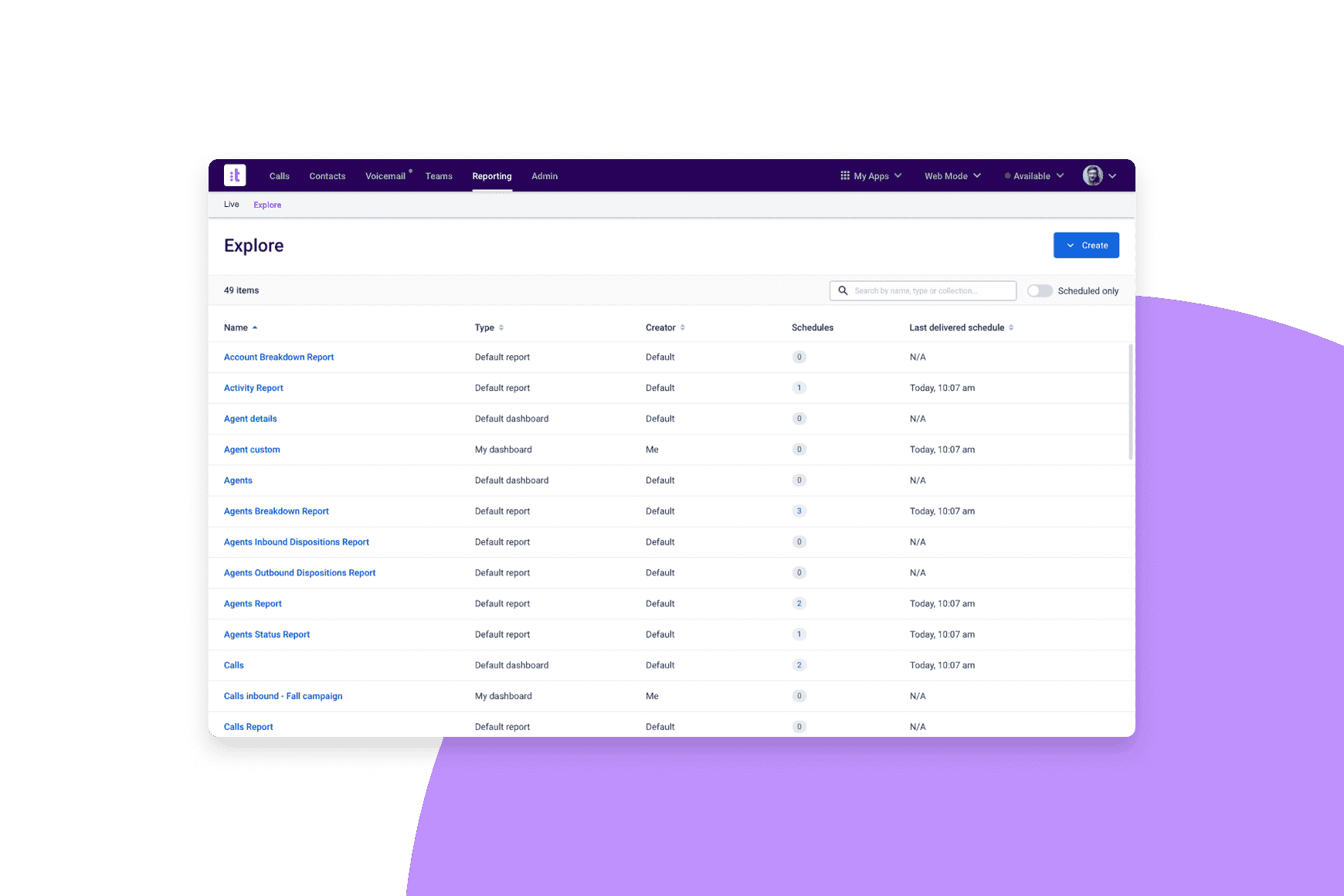Contact center customization when it matters most

By Christina Gates
0 min read

Continuously improving the customer journey in order to achieve the perfect customer experience (CX) is the Everest of the CX-obsessed. Historically, contact center customization — whether that’s changing the agent interface, building custom dashboards or integrating systems for improved context or process automations — has been a hassle. This is largely due to complex and inflexible tools that are difficult to customize and require IT resources, developers or professional services to build and manage. These dependencies slow agility and make it difficult to access the data needed to adapt to unexpected changes in customer behavior and needs.
While out-of-the-box integrations are often easy to manage and can help you achieve some elements of customization, they may not meet all your specific needs, and you’ll find yourself limited by the set of integrations your vendors choose to provide.
Customize to deliver great CX in turbulent times
The need for a customizable customer support solution is present in many industries and is particularly pressing for travel and hospitality. This industry presents unique challenges, namely, the existence of mixed target groups, split among different customer value tiers requiring a multitude of support languages. In response to the COVID-19 pandemic, many global agencies have issued travel advisories or restrictions, large conferences and entertainment events have been canceled, and companies are beginning to ban business-related trips. The consequences are estimated to cost the U.S. travel and tourism industry at least $24 billion in foreign spending alone. Globally, travel could be adversely impacted by up to 25% this year — a total loss of three months of travel. This developing crisis is wreaking havoc on contact centers who are now struggling to keep up with a sudden influx of inquiries and cancelations while simultaneously strategizing on ways to keep customers informed, engaged and loyal. Retaining customers is more important than ever, as companies face incredible pressure on the bottom line.
During this time, customers are struggling to reach businesses when they need to most. Call centers are overloaded with heavy volumes resulting in long hold times and time-to-callback. Travel and hospitality companies can ease the struggle by redesigning Interactive Voice Response (IVR) systems and routing to better anticipate callers’ questions, offer more relevant self-service and target segments with proactive outreach.
IVR and routing customization for a smoother customer journey
To reduce strain on your overtaxed call center and lower costs during the downturn, you should prioritize customizing your IVR for a smooth self-service experience. Build IVR menus to deflect common questions related to cancelation policies or service continuity, as well as handle frequent requests such as booking cancelations.
In order to achieve this quickly, it helps to harness the power of a flow builder with:
- a visual interface that allows for DIY design using intuitive methods like drag-and-drop,
- extensibility to integrate with any of your systems through simple configuration,
- complete flexibility to customize flow actions and events
These features will help you rapidly adapt your IVR to meet evolving needs while ensuring an intelligent, efficient and friction-free customer experience.
For example, you can integrate your customer relationship management (CRM) and booking system to distinguish when a VIP frequent flyer calls in. If that caller cancels an upcoming flight while in the IVR, you could play a special message thanking them for being a loyal customer and extending a special marketing offer on their next booking. If the caller is interested in learning more, they can be automatically redirected to a dedicated group of agents trained on the new offer and experienced with handling high-value clients. When the agent is connected with the caller, they will immediately see all the actions the customer took in the IVR, as well as any relevant context such as flight history, travel preferences and VIP status tenure.
It may be operationally beneficial to split inbound traffic according to hotel location refund policies, or split certain calls to another call center. A highly customizable system will let you take complete control over how you design routing, letting you create any combination of custom criteria tailored to your specific business requirements.

CUSTOMER ENGAGEMENT
Studio
Studio makes it easy to design, build, and deploy compelling customer journeys with clicks – not code.
Proactive outreach for positive touchpoints
Businesses in the travel and tourism sector should not underestimate the power of proactive outbound in the current climate. Customers are seeking information and updates as the coronavirus spreads globally. Your contact center can coordinate outreach on multiple channels, such as email, text message or even social media. This cadence of touchpoints keeps customers informed, setting expectations and deflecting questions that might otherwise come into your contact center. It also keeps them positively engaged with your brand during a time when their travel needs are lessened.
Let’s consider a hotel company that would like to minimize cancelations while also looking out for the wellbeing of guests. They could send a proactive email to guests with bookings scheduled to take place in the next two months in areas that are affected by local health department guidelines. This communication can inform guests that the brand cares about making travel worry-free and has elected to waive cancelation fees, providing quick access for the guest to manage their booking online. For guests in that timeframe traveling to lesser impacted areas, the hypothetical company could send an email offering credits that can be used within the remainder of the year, giving peace-of-mind to the customer while also preventing revenue loss. Either of these use cases requires data to flow freely between your reservation engine, contact center, marketing platform and mobile applications. Orchestrating sophisticated routing like this can rarely be done in an agile manner — unless you’re operating on a contact center platform that allows for integration and customization through configuration, as opposed to code.
Your data, your way
When making quick changes like these in your contact center, it becomes even more critical to have both a broad and granular view into performance, so you can better understand the impact of your changes and whether there are still areas that could be improved.
In situations like this, pre-built reports and dashboards with standard metrics may not be the best option. The right contact center solution can enable you to fully customize in order to learn from data sets and act upon the information in ways that improve the entire customer experience, even through turbulent times.
Ideally, you are looking for an analytics application that allows business analysts and contact center administrators to fine-tune their data with just a few clicks and web-based configuration. An application that lets admins insert simple calculations and determine important metrics that matter to the business, enabling personalized reports and dashboards. The goal is to grant instant control to the workforce so they can get the insights they need, in the format they need, for an unprecedented level of command over the contact center.
Contact center customization will extend your reporting, analytics and routing design capabilities to place more power directly in the hands of the line of business. When facing the unexpected, you can stay prepared by having full control over your data and knowing exactly how you can adapt your service in order to provide the best possible customer experience through challenging times.

ANALYTICS & INSIGHTS
Business intelligence
Turn insights into results with Talkdesk Explore.








